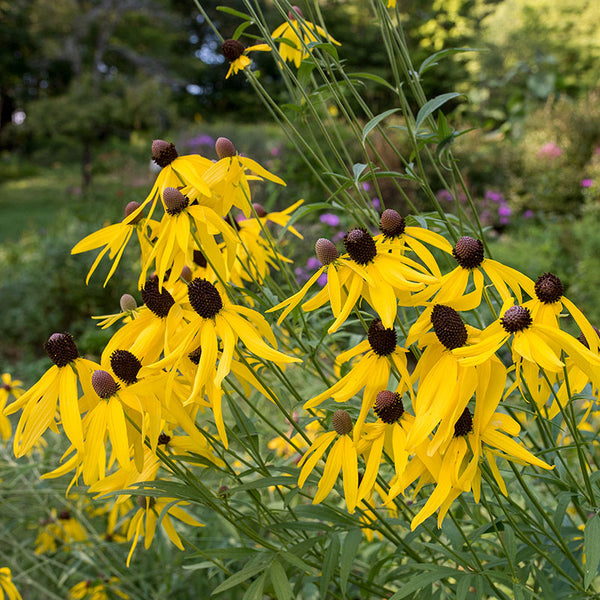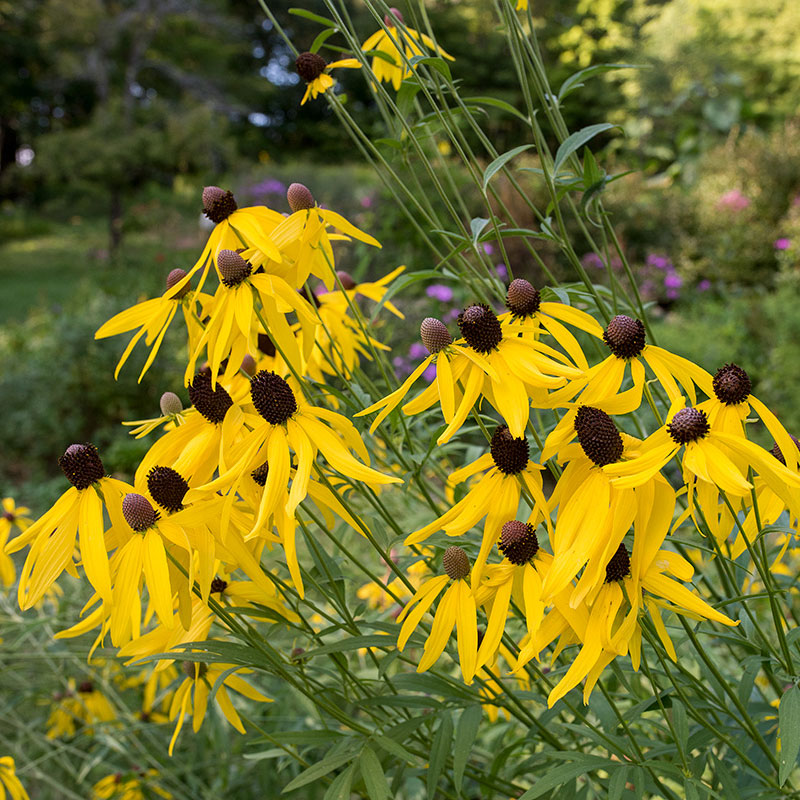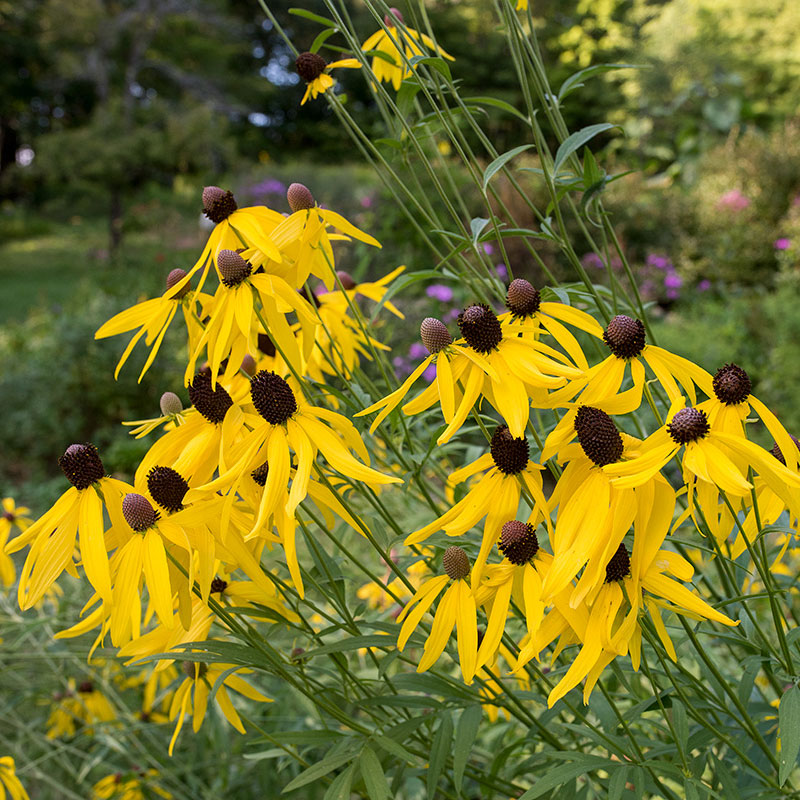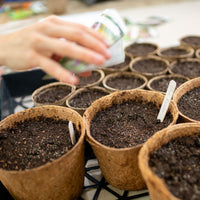Seed Packet
Yellow Coneflower
Ratibida pinnata
The native range of this showy perennial encompasses the plains to the East, where it is adaptable to differing soils. Beautiful large light yellow petals droop from tall purple-brown cone centers and wave in the summer breezes. Yellow coneflowers embellish dry borders, mingle companionably with coneflowers and silvery-blue sea holly in the back border, and nurture native bees and birds.
SKU #S115

































